Jingxiang Sun
GeoSAM2: Unleashing the Power of SAM2 for 3D Part Segmentation
Aug 19, 2025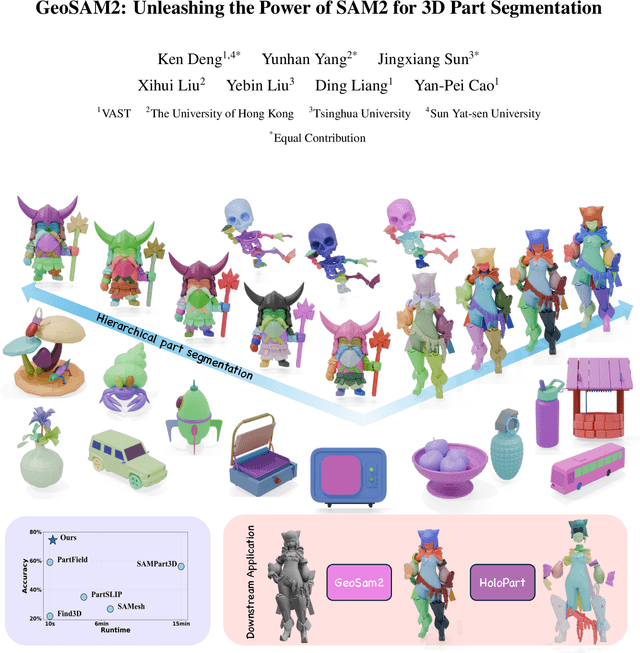

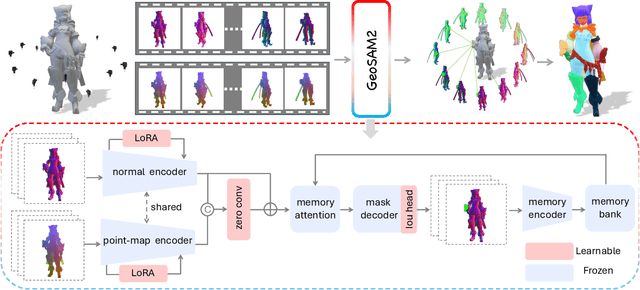
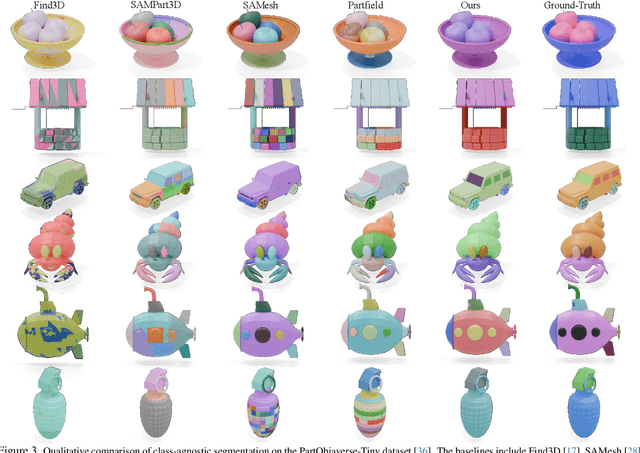
Abstract:Modern 3D generation methods can rapidly create shapes from sparse or single views, but their outputs often lack geometric detail due to computational constraints. We present DetailGen3D, a generative approach specifically designed to enhance these generated 3D shapes. Our key insight is to model the coarse-to-fine transformation directly through data-dependent flows in latent space, avoiding the computational overhead of large-scale 3D generative models. We introduce a token matching strategy that ensures accurate spatial correspondence during refinement, enabling local detail synthesis while preserving global structure. By carefully designing our training data to match the characteristics of synthesized coarse shapes, our method can effectively enhance shapes produced by various 3D generation and reconstruction approaches, from single-view to sparse multi-view inputs. Extensive experiments demonstrate that DetailGen3D achieves high-fidelity geometric detail synthesis while maintaining efficiency in training.
SemanticSplat: Feed-Forward 3D Scene Understanding with Language-Aware Gaussian Fields
Jun 11, 2025Abstract:Holistic 3D scene understanding, which jointly models geometry, appearance, and semantics, is crucial for applications like augmented reality and robotic interaction. Existing feed-forward 3D scene understanding methods (e.g., LSM) are limited to extracting language-based semantics from scenes, failing to achieve holistic scene comprehension. Additionally, they suffer from low-quality geometry reconstruction and noisy artifacts. In contrast, per-scene optimization methods rely on dense input views, which reduces practicality and increases complexity during deployment. In this paper, we propose SemanticSplat, a feed-forward semantic-aware 3D reconstruction method, which unifies 3D Gaussians with latent semantic attributes for joint geometry-appearance-semantics modeling. To predict the semantic anisotropic Gaussians, SemanticSplat fuses diverse feature fields (e.g., LSeg, SAM) with a cost volume representation that stores cross-view feature similarities, enhancing coherent and accurate scene comprehension. Leveraging a two-stage distillation framework, SemanticSplat reconstructs a holistic multi-modal semantic feature field from sparse-view images. Experiments demonstrate the effectiveness of our method for 3D scene understanding tasks like promptable and open-vocabulary segmentation. Video results are available at https://semanticsplat.github.io.
Parametric Gaussian Human Model: Generalizable Prior for Efficient and Realistic Human Avatar Modeling
Jun 07, 2025Abstract:Photorealistic and animatable human avatars are a key enabler for virtual/augmented reality, telepresence, and digital entertainment. While recent advances in 3D Gaussian Splatting (3DGS) have greatly improved rendering quality and efficiency, existing methods still face fundamental challenges, including time-consuming per-subject optimization and poor generalization under sparse monocular inputs. In this work, we present the Parametric Gaussian Human Model (PGHM), a generalizable and efficient framework that integrates human priors into 3DGS for fast and high-fidelity avatar reconstruction from monocular videos. PGHM introduces two core components: (1) a UV-aligned latent identity map that compactly encodes subject-specific geometry and appearance into a learnable feature tensor; and (2) a disentangled Multi-Head U-Net that predicts Gaussian attributes by decomposing static, pose-dependent, and view-dependent components via conditioned decoders. This design enables robust rendering quality under challenging poses and viewpoints, while allowing efficient subject adaptation without requiring multi-view capture or long optimization time. Experiments show that PGHM is significantly more efficient than optimization-from-scratch methods, requiring only approximately 20 minutes per subject to produce avatars with comparable visual quality, thereby demonstrating its practical applicability for real-world monocular avatar creation.
DetailGen3D: Generative 3D Geometry Enhancement via Data-Dependent Flow
Nov 25, 2024Abstract:Modern 3D generation methods can rapidly create shapes from sparse or single views, but their outputs often lack geometric detail due to computational constraints. We present DetailGen3D, a generative approach specifically designed to enhance these generated 3D shapes. Our key insight is to model the coarse-to-fine transformation directly through data-dependent flows in latent space, avoiding the computational overhead of large-scale 3D generative models. We introduce a token matching strategy that ensures accurate spatial correspondence during refinement, enabling local detail synthesis while preserving global structure. By carefully designing our training data to match the characteristics of synthesized coarse shapes, our method can effectively enhance shapes produced by various 3D generation and reconstruction approaches, from single-view to sparse multi-view inputs. Extensive experiments demonstrate that DetailGen3D achieves high-fidelity geometric detail synthesis while maintaining efficiency in training.
DreamCraft3D++: Efficient Hierarchical 3D Generation with Multi-Plane Reconstruction Model
Oct 16, 2024
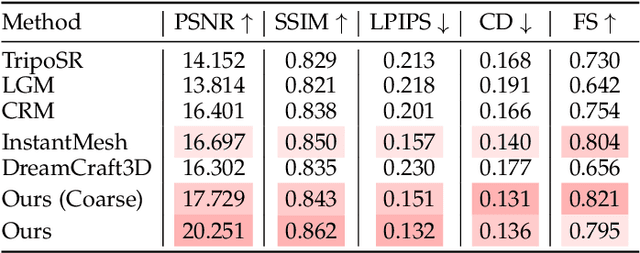


Abstract:We introduce DreamCraft3D++, an extension of DreamCraft3D that enables efficient high-quality generation of complex 3D assets. DreamCraft3D++ inherits the multi-stage generation process of DreamCraft3D, but replaces the time-consuming geometry sculpting optimization with a feed-forward multi-plane based reconstruction model, speeding up the process by 1000x. For texture refinement, we propose a training-free IP-Adapter module that is conditioned on the enhanced multi-view images to enhance texture and geometry consistency, providing a 4x faster alternative to DreamCraft3D's DreamBooth fine-tuning. Experiments on diverse datasets demonstrate DreamCraft3D++'s ability to generate creative 3D assets with intricate geometry and realistic 360{\deg} textures, outperforming state-of-the-art image-to-3D methods in quality and speed. The full implementation will be open-sourced to enable new possibilities in 3D content creation.
Human4DiT: Free-view Human Video Generation with 4D Diffusion Transformer
May 27, 2024


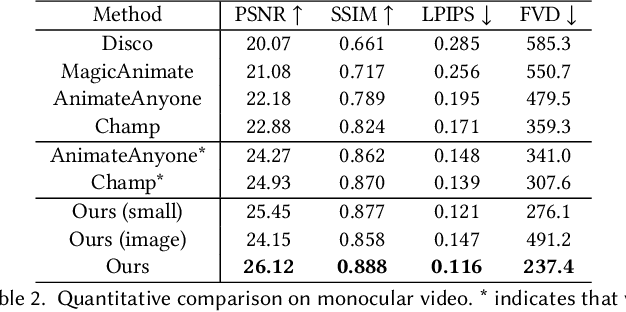
Abstract:We present a novel approach for generating high-quality, spatio-temporally coherent human videos from a single image under arbitrary viewpoints. Our framework combines the strengths of U-Nets for accurate condition injection and diffusion transformers for capturing global correlations across viewpoints and time. The core is a cascaded 4D transformer architecture that factorizes attention across views, time, and spatial dimensions, enabling efficient modeling of the 4D space. Precise conditioning is achieved by injecting human identity, camera parameters, and temporal signals into the respective transformers. To train this model, we curate a multi-dimensional dataset spanning images, videos, multi-view data and 3D/4D scans, along with a multi-dimensional training strategy. Our approach overcomes the limitations of previous methods based on GAN or UNet-based diffusion models, which struggle with complex motions and viewpoint changes. Through extensive experiments, we demonstrate our method's ability to synthesize realistic, coherent and free-view human videos, paving the way for advanced multimedia applications in areas such as virtual reality and animation. Our project website is https://human4dit.github.io.
DeepSeek-VL: Towards Real-World Vision-Language Understanding
Mar 11, 2024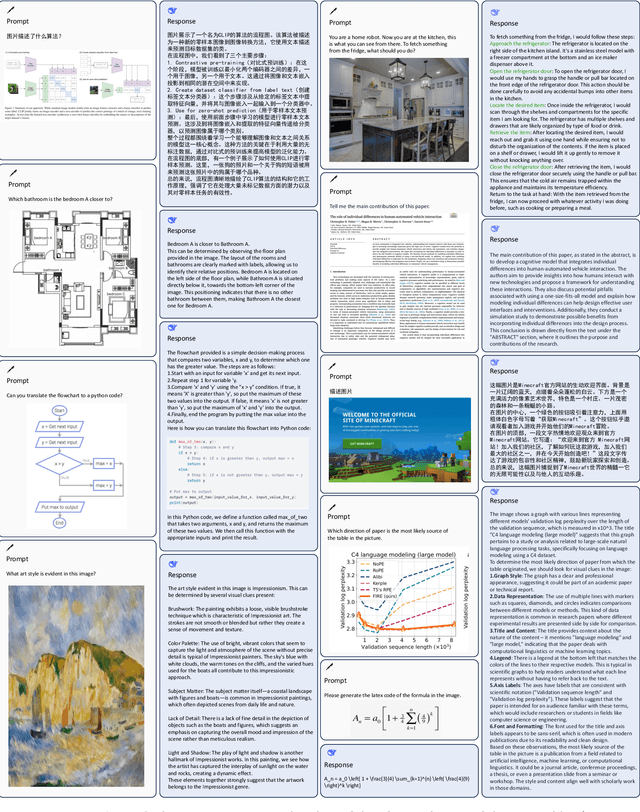
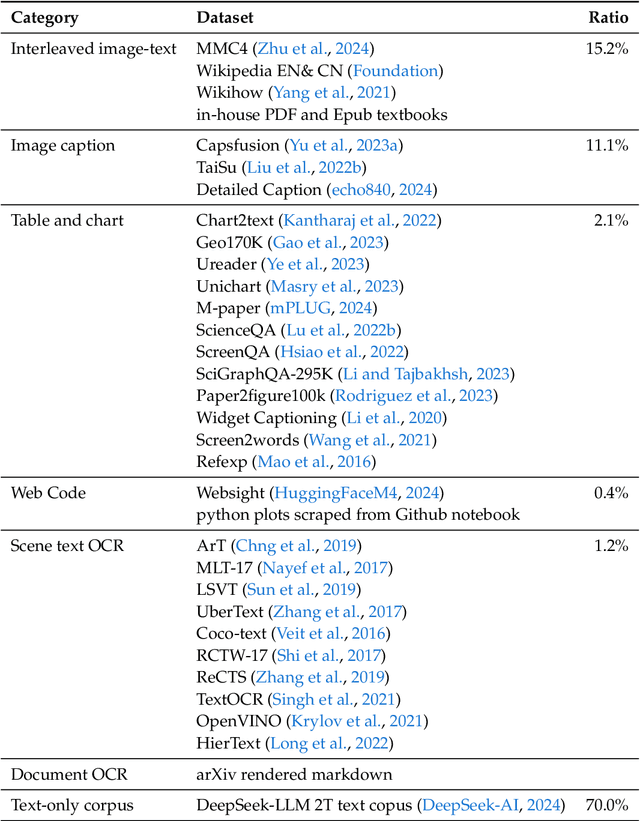
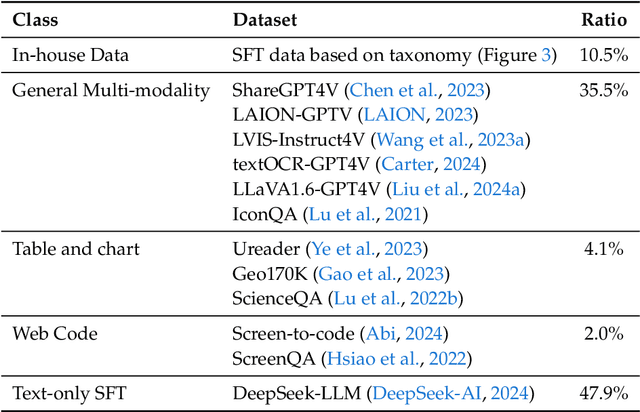
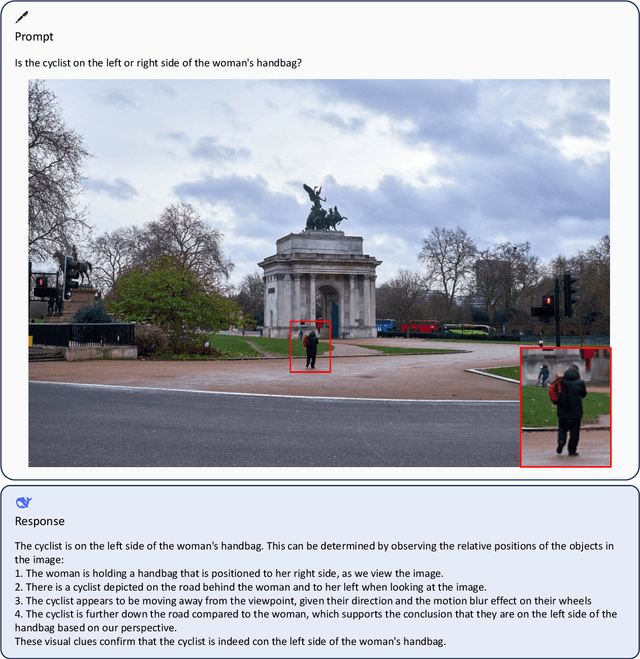
Abstract:We present DeepSeek-VL, an open-source Vision-Language (VL) Model designed for real-world vision and language understanding applications. Our approach is structured around three key dimensions: We strive to ensure our data is diverse, scalable, and extensively covers real-world scenarios including web screenshots, PDFs, OCR, charts, and knowledge-based content, aiming for a comprehensive representation of practical contexts. Further, we create a use case taxonomy from real user scenarios and construct an instruction tuning dataset accordingly. The fine-tuning with this dataset substantially improves the model's user experience in practical applications. Considering efficiency and the demands of most real-world scenarios, DeepSeek-VL incorporates a hybrid vision encoder that efficiently processes high-resolution images (1024 x 1024), while maintaining a relatively low computational overhead. This design choice ensures the model's ability to capture critical semantic and detailed information across various visual tasks. We posit that a proficient Vision-Language Model should, foremost, possess strong language abilities. To ensure the preservation of LLM capabilities during pretraining, we investigate an effective VL pretraining strategy by integrating LLM training from the beginning and carefully managing the competitive dynamics observed between vision and language modalities. The DeepSeek-VL family (both 1.3B and 7B models) showcases superior user experiences as a vision-language chatbot in real-world applications, achieving state-of-the-art or competitive performance across a wide range of visual-language benchmarks at the same model size while maintaining robust performance on language-centric benchmarks. We have made both 1.3B and 7B models publicly accessible to foster innovations based on this foundation model.
DeepSeek LLM: Scaling Open-Source Language Models with Longtermism
Jan 05, 2024



Abstract:The rapid development of open-source large language models (LLMs) has been truly remarkable. However, the scaling law described in previous literature presents varying conclusions, which casts a dark cloud over scaling LLMs. We delve into the study of scaling laws and present our distinctive findings that facilitate scaling of large scale models in two commonly used open-source configurations, 7B and 67B. Guided by the scaling laws, we introduce DeepSeek LLM, a project dedicated to advancing open-source language models with a long-term perspective. To support the pre-training phase, we have developed a dataset that currently consists of 2 trillion tokens and is continuously expanding. We further conduct supervised fine-tuning (SFT) and Direct Preference Optimization (DPO) on DeepSeek LLM Base models, resulting in the creation of DeepSeek Chat models. Our evaluation results demonstrate that DeepSeek LLM 67B surpasses LLaMA-2 70B on various benchmarks, particularly in the domains of code, mathematics, and reasoning. Furthermore, open-ended evaluations reveal that DeepSeek LLM 67B Chat exhibits superior performance compared to GPT-3.5.
VectorTalker: SVG Talking Face Generation with Progressive Vectorisation
Dec 18, 2023Abstract:High-fidelity and efficient audio-driven talking head generation has been a key research topic in computer graphics and computer vision. In this work, we study vector image based audio-driven talking head generation. Compared with directly animating the raster image that most widely used in existing works, vector image enjoys its excellent scalability being used for many applications. There are two main challenges for vector image based talking head generation: the high-quality vector image reconstruction w.r.t. the source portrait image and the vivid animation w.r.t. the audio signal. To address these, we propose a novel scalable vector graphic reconstruction and animation method, dubbed VectorTalker. Specifically, for the highfidelity reconstruction, VectorTalker hierarchically reconstructs the vector image in a coarse-to-fine manner. For the vivid audio-driven facial animation, we propose to use facial landmarks as intermediate motion representation and propose an efficient landmark-driven vector image deformation module. Our approach can handle various styles of portrait images within a unified framework, including Japanese manga, cartoon, and photorealistic images. We conduct extensive quantitative and qualitative evaluations and the experimental results demonstrate the superiority of VectorTalker in both vector graphic reconstruction and audio-driven animation.
InvertAvatar: Incremental GAN Inversion for Generalized Head Avatars
Dec 03, 2023Abstract:While high fidelity and efficiency are central to the creation of digital head avatars, recent methods relying on 2D or 3D generative models often experience limitations such as shape distortion, expression inaccuracy, and identity flickering. Additionally, existing one-shot inversion techniques fail to fully leverage multiple input images for detailed feature extraction. We propose a novel framework, \textbf{Incremental 3D GAN Inversion}, that enhances avatar reconstruction performance using an algorithm designed to increase the fidelity from multiple frames, resulting in improved reconstruction quality proportional to frame count. Our method introduces a unique animatable 3D GAN prior with two crucial modifications for enhanced expression controllability alongside an innovative neural texture encoder that categorizes texture feature spaces based on UV parameterization. Differentiating from traditional techniques, our architecture emphasizes pixel-aligned image-to-image translation, mitigating the need to learn correspondences between observation and canonical spaces. Furthermore, we incorporate ConvGRU-based recurrent networks for temporal data aggregation from multiple frames, boosting geometry and texture detail reconstruction. The proposed paradigm demonstrates state-of-the-art performance on one-shot and few-shot avatar animation tasks.
 Add to Chrome
Add to Chrome Add to Firefox
Add to Firefox Add to Edge
Add to Edge